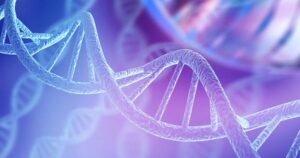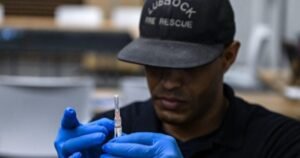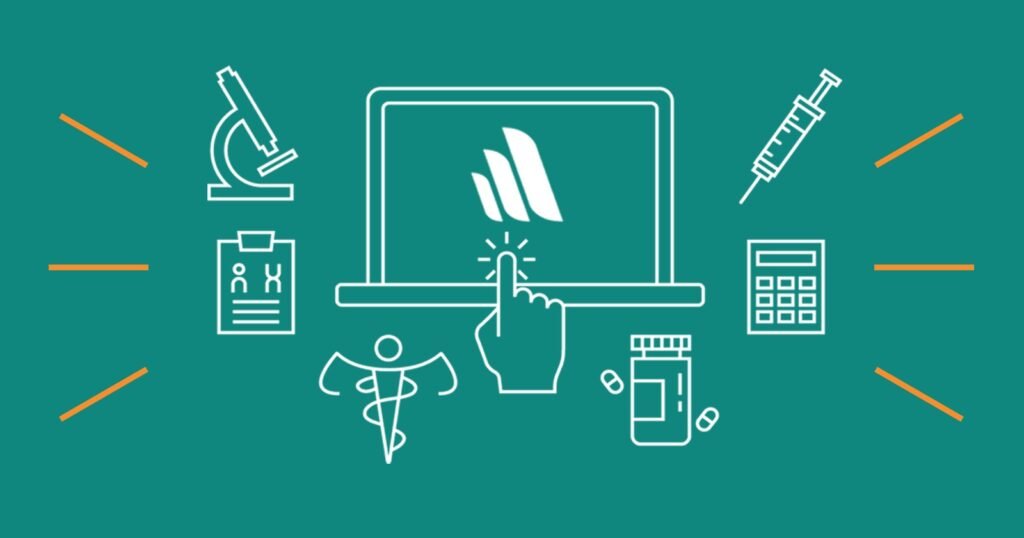Jaundice in Adults – Liver and Gallbladder Disorders
In jaundice, the skin and whites of the eyes look yellow. Jaundice occurs when there is too much bilirubin (a yellow pigment) in the blood—a condition called hyperbilirubinemia.
(See also Overview of Liver Disease and Jaundice in the Newborn.)
DR P. MARAZZI/SCIENCE PHOTO LIBRARY
Bilirubin is formed when hemoglobin (the part of red blood cells that carries oxygen) is broken down as part of the normal process of recycling old or damaged red blood cells. Bilirubin is carried in the bloodstream to the liver and is excreted in the bile (the digestive juice produced by the liver). Bilirubin is then moved through the bile ducts into the digestive tract, so that it can be eliminated from the body. Most bilirubin is eliminated in stool, but a small amount is eliminated in urine. If bilirubin cannot be moved through the liver and bile ducts quickly enough, it builds up in the blood and is deposited in the skin. The result is jaundice.
Many people with jaundice also have dark urine and light-colored stool. These changes occur when a blockage or other problem prevents bilirubin from being eliminated in stool, causing more bilirubin to be eliminated in urine.
If bilirubin levels are high, substances formed when bile is broken down may accumulate, causing itching all over the body. But jaundice itself causes few other symptoms in adults. However, in newborns with jaundice high bilirubin levels (hyperbilirubinemia) can cause a form of brain damage called kernicterus.
Also, many disorders that cause jaundice, particularly severe liver disease, cause other symptoms or serious problems. In people with liver disease, these symptoms may include nausea, vomiting and abdominal pain, and small spiderlike blood vessels that are visible in the skin (spider angiomas). Men may have enlarged breasts, shrunken testes, and pubic hair that grows as it does in women.
Image provided by Thomas Habif, MD.
Serious problems caused by liver disease can include
-
Ascites: Accumulation of fluid within the abdomen
-
Coagulopathy: A tendency to bleed or bruise
-
Hepatic encephalopathy: Deterioration of brain function because the liver malfunctions, allowing toxic substances to build up in the blood, reach the brain, and cause changes in mental function (such as confusion and drowsiness)
-
Portal hypertension: High blood pressure in the veins that bring blood to the liver, which can lead to bleeding in the esophagus and sometimes stomach
If people eat large amounts of food rich in beta-carotene (such as carrots, squash, and some melons), their skin may look slightly yellow, but their eyes do not turn yellow. This condition is not jaundice and is unrelated to liver disease.
Hepatitis is liver inflammation that is usually caused by a virus but can be caused by an autoimmune disorder or use of certain drugs. Hepatitis damages the liver, making it less able to move bilirubin into the bile ducts. Hepatitis may be acute (short-lived) or chronic (lasting at least 6 months). Acute viral hepatitis is a common cause of jaundice, particularly jaundice that occurs in young and otherwise healthy people. When hepatitis is caused by an autoimmune disorder or a drug, it cannot be spread from person to person.
Drinking large amounts of alcohol over a long period of time damages the liver. The amount of alcohol and time required to cause damage varies, but typically, people must drink heavily for at least 8 to 10 years.
Some drugs, toxins, and herbal products can also damage the liver (see table Some Causes and Features of Jaundice).
Less common causes of jaundice include hereditary disorders that interfere with how the body processes bilirubin. They include Gilbert syndrome and other, less common disorders such as Dubin-Johnson syndrome. In Gilbert syndrome, bilirubin levels are slightly increased but usually not enough to cause jaundice. This disorder is most often detected during routine screening tests in young adults. It causes no other symptoms and no problems.
Disorders that cause excessive breakdown of red blood cells (hemolysis) often cause jaundice (see Autoimmune Hemolytic Anemia and Hemolytic Disease of the Newborn).
blood tests, and sometimes other tests.
In people with jaundice, the following symptoms are cause for concern:
-
Severe abdominal pain and tenderness
-
Changes in mental function, such as drowsiness, agitation, or confusion
-
Blood in stool or tarry black stool
-
Blood in vomit
-
Fever
-
A tendency to bruise or to bleed easily, sometimes resulting in a reddish purple rash of tiny dots or larger splotches (which indicate bleeding in the skin)
If people have any warning signs, they should see a doctor as soon as possible. People with no warning signs should see a doctor within a few days.
Doctors first ask questions about the person’s symptoms and medical history. Doctors then do a physical examination. What they find during the history and physical examination often suggests a cause and the tests that may need to be done (see table Some Causes and Features of Jaundice).
Doctors ask when the jaundice started and how long it has been present. They also ask when urine started to look dark (which usually occurs before jaundice develops). People are asked about other symptoms, such as itching, fatigue, changes in stool, and abdominal pain. Doctors are particularly interested in symptoms that suggest a serious cause. For example, sudden loss of appetite, nausea, vomiting, pain in the abdomen, and fever suggest hepatitis, particularly in young people and people with risk factors for hepatitis. Fever and severe, constant pain in the upper right part of the abdomen suggest acute cholangitis (infection of the bile ducts), usually in people with a blockage in a bile duct. Acute cholangitis is considered a medical emergency.
Doctors ask people whether they have had liver disorders, whether they have had surgery that involved the bile ducts, and whether they take any drugs that can cause jaundice (for example, the prescription drugs amoxicillin/clavulanate, chlorpromazine, azathioprine, and oral contraceptives; alcohol; over-the-counter drugs; medicinal herbs; and other herbal products such as teas). Knowing whether family members have also had jaundice or other liver disorders can help doctors identify hereditary liver disorders.Doctors ask people whether they have had liver disorders, whether they have had surgery that involved the bile ducts, and whether they take any drugs that can cause jaundice (for example, the prescription drugs amoxicillin/clavulanate, chlorpromazine, azathioprine, and oral contraceptives; alcohol; over-the-counter drugs; medicinal herbs; and other herbal products such as teas). Knowing whether family members have also had jaundice or other liver disorders can help doctors identify hereditary liver disorders.
Because hepatitis is a common cause, doctors ask particularly about conditions that increase the risk of hepatitis, such as Working at a day care center Living in or working at an institution with long-term residents, such as a mental health care facility, prison, or long-term care facility Living in or traveling to an area where hepatitis is widespread Participating in anal sex Eating raw shellfish Injecting illegal or recreational drugs Having hemodialysis Sharing razor blades or toothbrushes Getting a tattoo or body piercing Working in a health care facility without being vaccinated against hepatitis Having had a blood transfusion before 1992 Having sex with someone who has hepatitis Having been born between 1945 and 1965 During the physical examination, doctors look for signs of serious disorders (such as fever, very low blood pressure, and a rapid heart rate) and for signs that liver function is greatly impaired (such as easy bruising, a rash of tiny dots or splotches, or changes in mental function). They gently press on the abdomen to check for lumps, tenderness, swelling, and other abnormalities, such as an enlarged liver or spleen. Tests include the following: Liver tests (also called liver enzyme tests) involve measuring blood levels of enzymes and other substances produced by the liver. These tests help doctors determine whether the cause is liver malfunction or a blocked bile duct. If a bile duct is blocked, imaging tests, such as ultrasonography, are usually required. Other blood tests are done based on the disorder doctors suspect and the results of the examination and the initial tests. They may include Tests to assess the blood’s ability to clot (prothrombin time and partial thromboplastin time) Tests to check for hepatitis viruses or abnormal antibodies (due to autoimmune disorders) A complete blood count Blood cultures to check for infection of the bloodstream Examination of a blood sample under a microscope to check for excessive destruction of red blood cells If imaging is needed, ultrasonography of the abdomen is often done first. It can usually detect blockages in the bile ducts. Alternatively, computed tomography (CT) or magnetic resonance imaging (MRI) may be done. If ultrasonography shows a blockage in a bile duct, other tests may be needed to determine the cause. Typically, magnetic resonance cholangiopancreatography (MRCP) or endoscopic retrograde cholangiopancreatography (ERCP) is used. MRCP is MRI of the bile and pancreatic ducts, done with specialized techniques that make the fluid in the ducts appear bright and the surrounding tissues appear dark. Thus, MRCP provides better images of the ducts than conventional MRI. For ERCP, a flexible viewing tube (endoscope) is inserted through the mouth and into the small intestine, and a radiopaque contrast agent is injected through the tube into the bile and pancreatic ducts. Then x-rays are taken. When available, MRCP is usually preferred because it is just as accurate and is safer. But ERCP may be used because it enables doctors to take a biopsy sample, remove a gallstone, or do other procedures. Occasionally, liver biopsy is needed. It may be done when certain causes (such as viral hepatitis, use of a drug, or exposure to a toxin) are suspected or when the diagnosis is unclear after doctors have the results of other tests. Laparoscopy may be done when other tests have not identified why bile flow is blocked. For this procedure, doctors make a small incision just below the navel and insert a viewing tube (laparoscope) to examine the liver and gallbladder directly. Rarely, a larger incision is needed (a procedure called laparotomy).








































